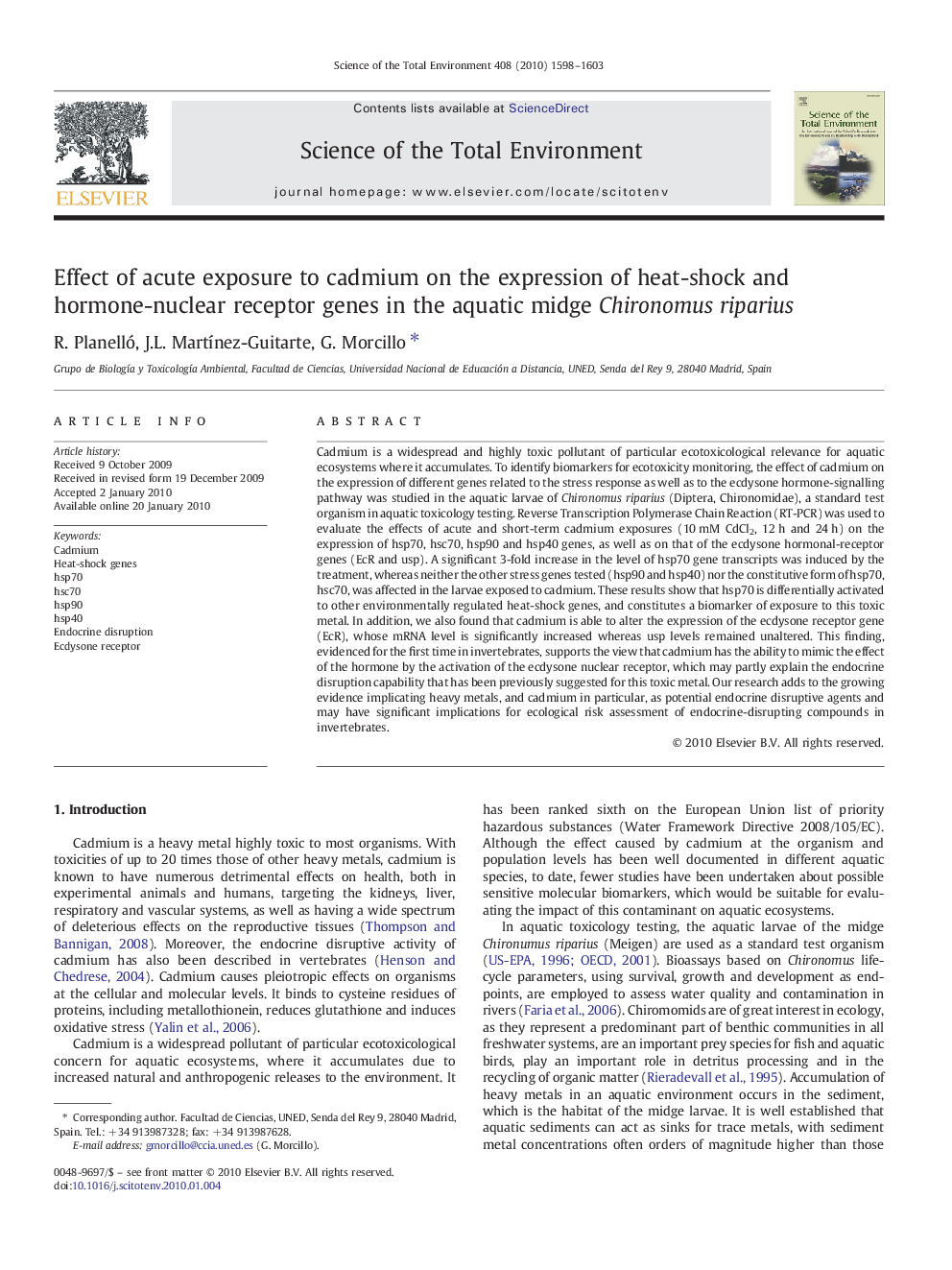| Article ID | Journal | Published Year | Pages | File Type |
|---|---|---|---|---|
| 4432063 | Science of The Total Environment | 2010 | 6 Pages |
Cadmium is a widespread and highly toxic pollutant of particular ecotoxicological relevance for aquatic ecosystems where it accumulates. To identify biomarkers for ecotoxicity monitoring, the effect of cadmium on the expression of different genes related to the stress response as well as to the ecdysone hormone-signalling pathway was studied in the aquatic larvae of Chironomus riparius (Diptera, Chironomidae), a standard test organism in aquatic toxicology testing. Reverse Transcription Polymerase Chain Reaction (RT-PCR) was used to evaluate the effects of acute and short-term cadmium exposures (10 mM CdCl2, 12 h and 24 h) on the expression of hsp70, hsc70, hsp90 and hsp40 genes, as well as on that of the ecdysone hormonal-receptor genes (EcR and usp). A significant 3-fold increase in the level of hsp70 gene transcripts was induced by the treatment, whereas neither the other stress genes tested (hsp90 and hsp40) nor the constitutive form of hsp70, hsc70, was affected in the larvae exposed to cadmium. These results show that hsp70 is differentially activated to other environmentally regulated heat-shock genes, and constitutes a biomarker of exposure to this toxic metal. In addition, we also found that cadmium is able to alter the expression of the ecdysone receptor gene (EcR), whose mRNA level is significantly increased whereas usp levels remained unaltered. This finding, evidenced for the first time in invertebrates, supports the view that cadmium has the ability to mimic the effect of the hormone by the activation of the ecdysone nuclear receptor, which may partly explain the endocrine disruption capability that has been previously suggested for this toxic metal. Our research adds to the growing evidence implicating heavy metals, and cadmium in particular, as potential endocrine disruptive agents and may have significant implications for ecological risk assessment of endocrine-disrupting compounds in invertebrates.
